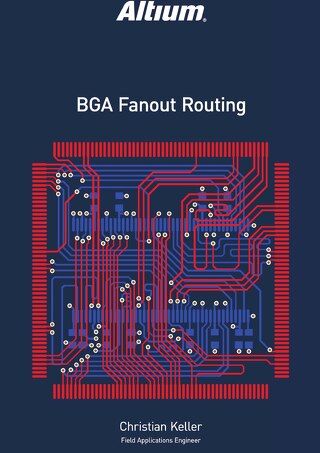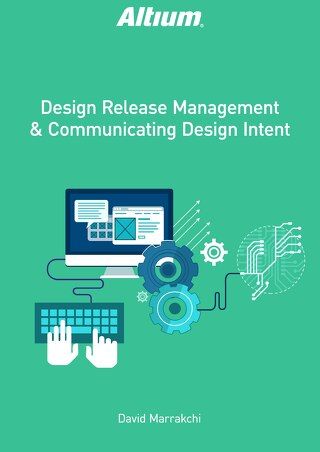Streamline Document Creation and Management

No more chaos now it's possible all the required documents can be created by running the output job file command of Altium so you get the same documents from each engineer in your organization every time.
PCB DOCUMENT CREATION AND MANAGEMENT
Document creation and management has long been one of the most time-consuming endeavors of an engineer’s daily routine. The sheer number of documents that gets created during a typical design cycle is astonishing. Multiple engineers need to create documentation at different stages during the design process the problem is, in most companies it is not controlled or as rigorous as it should be. So you end up getting the same documents from different
engineers at each design stage, but they are often very inconsistent and lacking in uniformity.
Often they don’t even contain the same information, same format or even the same disclosures.
Documentation should be uniform and follow the same structure and format from every engineer at each stage of the design cycle. It should not be left up to the individual engineers to decide what documentation they want to create, or how they want to format it or even what they want it to look like.
Those are high-level decisions that need to be made by management. The infrastructure should be created such that at each predetermined design stage, certain documents are required. Those documents should all be uniform and created from the same templates so they are consistent and contain the same level of information, presented in the same manner, from each engineer, every time, for every design project.
An example of typical engineering design flow at a mid-level company may have three stages:
SCHEMATIC DESIGN REVIEW
- The electrical engineers complete the schematics for a Printed Circuit Board PCB project.
- The engineer has a design review with his or her peers at that point to ensure the designs are error-free and contain all ofthe information required to move from the schematic development phase to the PCB layout phase.
- In the schematic design review, electrical engineers will usually congregate with other electrical engineers, project leads and management to ensure they are ready to move onto the next stage. Documents that are required at this stage may include printouts of the schematics, a BOM and an Electrical Rules Check (ERC) report to ensure there are no errors in the schematic itself. The ERC report proves that the proper schematic templates are being used, and that the BOM contains all the required fields. The ERC also proves that all components used in the design are approved, available and meet the target costs.
- If the design meets all of the above criteria, the project moves into the PCB layout stage.
PCB LAYOUT MANUFACTURING PACKAGE CREATION
- After completing the Printed Circuit Board layout stage, another design review is held, this time to verify the validity of the PCB and toapprove the manufacturing and development of the PCB fabrication or bare boards.
- During the PCB design review, the following documents may be required: the creation of Gerber files, Gerber X2, IPC 2581B, or ODB++ files, drill files, drill drawings, composite drawings, PCB trace width prints, schematic files, BOM, Design Rule Checking (DRC) report and a test point report. These documents should all use the same templates and be presented in the same format.
- If all the above documents are complete and correct, then the fabrication package is sent to a board manufacturingfacility for the bare boards to be created.
- After the bare boards are received, they are vetted to ensure accuracy, quality and that all the footprints are correct. If the fabrication board meets the company requirements, an assembly package needs to be created and sent to the board house so final PCB ground plane assemblies can be ordered.
PCB ASSEMBLY PACKAGE CREATION
- The PCB assembly package is the final stage in the PCB design rules project-development process before starting product testing, integration and qualification.
- A typical PCB assembly package may consist of the following documents: assembly drawing, schematic drawings, pick and place files, test point report, BOM and a 3D step model of board or assembly.
The three stages described above comprise a typical design process for a mid-level company.
Imagine the chaos of having multiple engineers each submitting their own documentation in their own format, and the inconsistent nature in which that documentation is presented.
Altium Designer® has built solutions to address this challenge. When Altium Designer is installed, we include a templates folder that presents multiple templates for a number of different document types such as schematic templates, PCB net clearance rules templates and BOM templates. Those templates can easily be modified and saved to meet your organization’s needs.There is also the concept of a document template called an “Output Job File,” which is a template that can be created so you can group a number of documents together for a specific toll gate.
All therequired documents can be created by running the output job file command so you get the same documents from each engineer in your organization every time.For the three stages described above, you can create three separate output job files. One for each toll gate.
- Schematic design review output job file
- PCB layout manufacturing package output job file
- PCB assembly package output job file
In each output job file, each of the required documents described above would be defined using the appropriate document templates. Your design teams can benefit by using the output job files templates at each design stage of your design processes, ensuring that all engineers arecreating the same documents the same way, every time. This maintains conformity and ensures a significant reduction in the number of man hours spent creating and modifying documentation on a daily basis.









